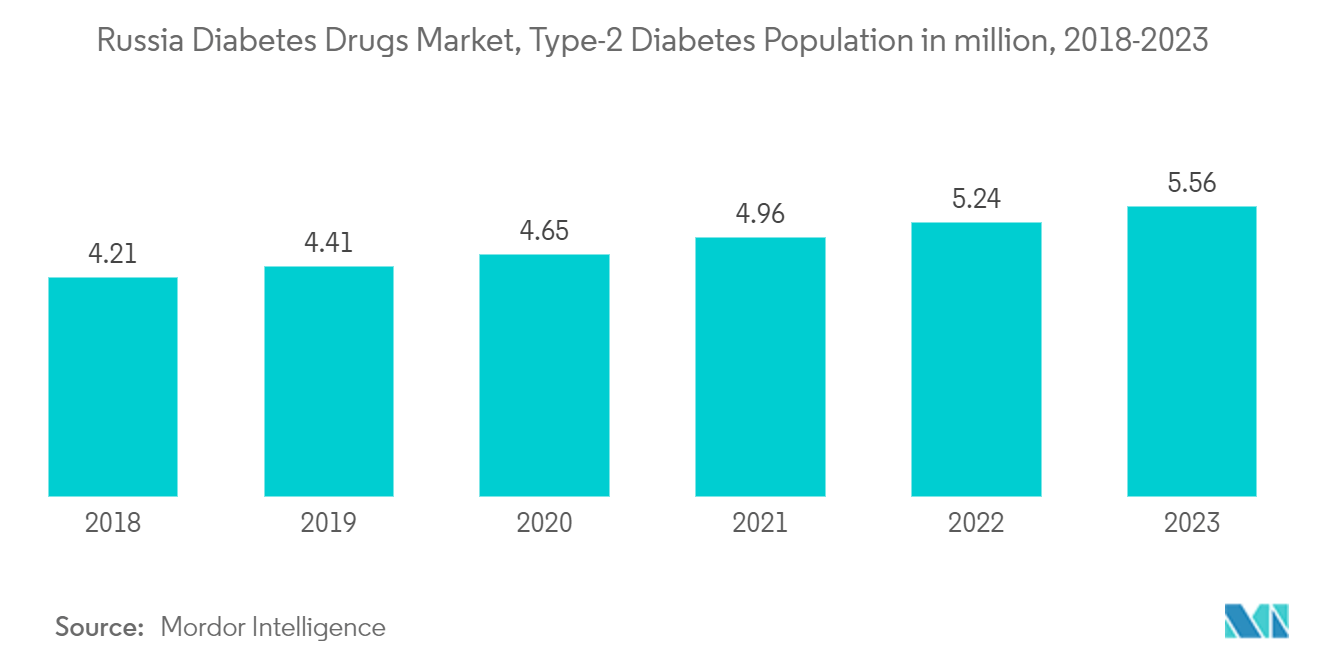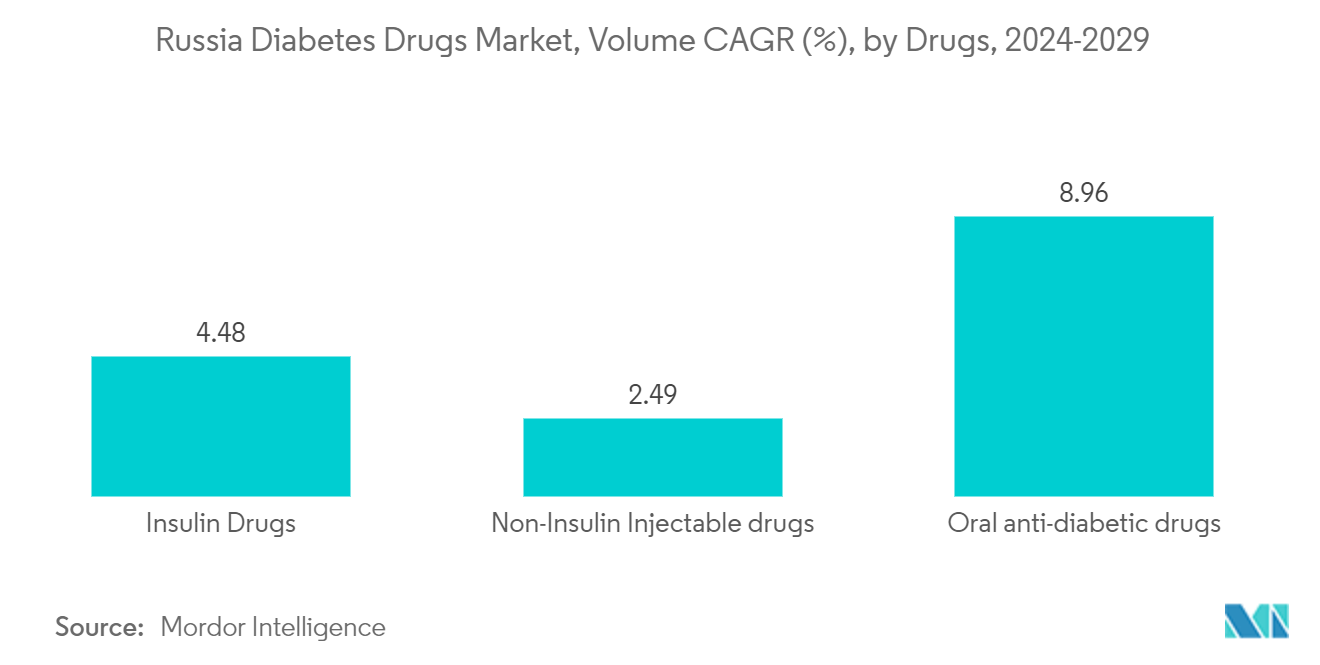Market Trends of Russia Diabetes Drugs Industry
The oral anti-diabetic drugs segment holds the highest market share in the Russia Diabetes Drugs Market in the current year
Oral Anti-Diabetic Drugs are available internationally and are recommended for use when escalation of treatment for type 2 diabetes is required along with lifestyle management. Oral agents are typically the first medications used in treating type 2 diabetes due to their wide range of efficacy, safety, and mechanisms of action. Anti-diabetic drugs help diabetes patients control their condition and lower the risk of diabetes complications. People with diabetes may need to take anti-diabetic drugs for their whole lives to control their blood glucose levels and avoid hypoglycemia and hyperglycemia. Oral anti-diabetic agents present the advantages of easier management and lower cost. So they became an attractive alternative to insulin with better acceptance, which enhances adherence to the treatment.
Russia witnessed an alarming increase in the prevalence of diabetes in recent years. Patients with diabetes require many corrections throughout the day to maintain nominal blood glucose levels, such as oral anti-diabetic medication or ingestion of additional carbohydrates by monitoring their blood glucose levels. The rate of newly diagnosed Type 1 and Type 2 diabetes cases is seen to increase, mainly due to obesity, unhealthy diet, and physical inactivity.
According to IDF, to reduce the diabetes epidemic in the country, the Russian government needs to fully implement a National Diabetes Plan that establishes a state budget and guarantees diabetes care to all Russian citizens. Russia is working towards improving the reimbursement system for all aspects of diabetes care, limiting out-of-pocket payments, and preventing households from incurring catastrophic expenditures. Also, implementing a national screening program to improve the early identification of disturbed carbohydrate metabolism and creating a specialized diabetes health service under the Ministry of Health of the Russian Federation.
Owing to the above factors, the market will likely continue to grow.

Sodium-glucose cotransport -2 (SGLT-2) inhibitor segment is expected to register the highest CAGR in the Russia Diabetes Drugs Market
Sodium-glucose cotransport -2 (SGLT-2) inhibitor segment is expected to register a CAGR of about 11.7% over the forecast period.
SGLT-2 inhibitors, also called gliflozins, are a medicine class used to lower high blood glucose levels in people with type 2 diabetes. SGLT-2 inhibitors act independently of beta-cell function in the pancreas. SGLT-2 drugs significantly manage cardiovascular risk factors, including blood pressure, cardiac function, and antiinflammatory activity. SGLT-2 inhibitors are effective at lowering hemoglobin A1c levels and improving weight loss. They include a low risk of hypoglycemia and are usually well tolerated. Technological advancements increased over the period leading to several modifications in the SGLT-2 inhibitors or the formulations being developed.
According to Roscongress, Russia ranks fifth in the world regarding the number of patients with diabetes mellitus aged 20 to 79. The growing diabetic population acts as a driver for diabetes care devices. In obese individuals, the fat cells in the body release pro-inflammatory chemicals, which may make the body less sensitive to the insulin it produces by disrupting the function of insulin-responsive cells. Russia's Federal Targeted Program on Diabetes states that diagnosing diabetes and treating its complications earlier can result in significant savings.
Various initiatives are launched to control diabetes in the country. For instance, in Moscow Urban Forum 2021, a Letter of Intent was signed between the Youth Council under the Moscow Department of Health, Moscow Urban Forum, Moscow Diabetic Association, Moscow Diabetic Association Medical Section, KB Strelka, and Novo Nordisk to implement the Cities Changing Diabetes program in Moscow. The program in Moscow aims to comprehensively assess the features of diabetes challenges relevant to Moscow. The program also implemented the development of an action plan to combat this disease among the most vulnerable groups of the population.
The roll-out of many new products, increasing international research collaborations in technology advancement, and increasing awareness about diabetes among people are some of the market opportunities for the players in the Russian diabetes drugs market.


